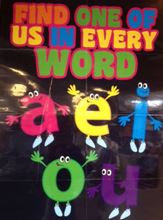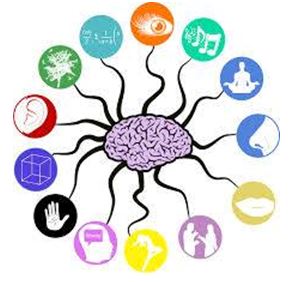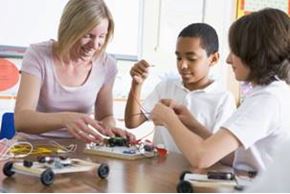Studies show that we mainly rely on our senses to process information when learning and that our brain is capable of processing information using more than one “sense” at the same time. The combination of looking (visual), listening (auditory), moving around (kinesthetic) and other senses can create a lasting impression in terms of learning. This is called Multi-Sensory learning.
This natural approach is one way to allow children engage in learning in a more natural way by using heir “senses”.
Visual Learners are those who prefer to acquire new information by using the sense of site. Typically, children who are visual learners are those who enjoy vibrantly colored pictures, flash cards, videos, etc.
There are other children who learn more by hearing and responding verbally. They are called musical/auditory learners, who enjoy rhymes or songs, and can respond quickly to verbal instructions.
Kinesthetic learners acquire knowledge best using their body to manipulate different materials to learn. For example playing with blocks, analyzing mind maps, solving hands on puzzles and learning in any way that involves moving their body is just a few examples of kinesthetic activities. They learn best when they are “actively” involved in learning activities.
When we talk about learning styles, we refer to these preferred types of learning. Along with logical/mathematics, social and solitary styles of learning, as illustrated below, it is important to understand and cater for these differences when planning learning for success.
Learning Style
When we refer to Multi-Sensory learning in particular we are talking about learning that happens when more than one sense is used to acquire and retain information. Using multiple senses can make more cognitive connections and associations in learning a concept. It can connect ideas and information and can make learning a more engaging experience.
There are many students who often struggle in learning as the traditional method of teaching is more often beneficial to auditory learners. If students/children says “it’s not fun in school” or express boredom when learning, it does not necessarily mean that they are lazy or not interested. There is a large body of scientific evidence behind this behavior that correlates to” the way” children learn.
Multi-Sensory education focuses on each learning style. It triggers all the senses through one activity. This method of teaching has the ability to reach to almost every student and thus opens up new possibilities for education and good teaching practice.
Maths, science, language, history and even computer skills can be taught in a multi-sensory way. Here are a few tips to make learning a fun, multi-sensory experience:
- Use pictures and words rather than words alone. Retention of information is improves when words are associated with pictures. Use of flash cards, posters etc, fun characters etc.
- Use of color for highlighting or color coding words assists with reading or sentence construction.

- Create learning models such as diagrams, mind maps and puzzles that can trigger not only the visual senses but can also inspire a kinesthetic learner. You can also have kids create their own simple dioramas, models or hand on investigations to ensure learning in interactive.
- Use the new multimedia technologies. Multimedia can stimulate more than one sense at a time. There are many educational applications available, that will not only make learning fun but will also engage students in learning.
- Have more outdoor activities. Find a sensory garden close to your home for instance and watch your younger child delight in the multi sensory opportunities of the outdoors.
- Use animation and narration. Animations can be easily built on slides of projection screens or computer screens so why not use them in teaching. But keep in mind that animation can be more effective when incorporated with an audio track rather than on-screen text.
- It is good teaching practice to use a variety of manipulative materials when teaching maths skills in all strands. Moving children through the stage of concrete manipulation of materials is essential to their understanding mathematical concepts.
- Use different materials in teaching handwriting. Sand trays are a great resource to encourage children to write letters and numbers correctly. Rice can be used as an alternative as well.
Multi sensory leaning requires a more creative approach to teaching. An environment that is rich with multi sensory experiences stimulates a child’s cognitive abilities and the progress that eventuates from this approach is well worth the effort.


